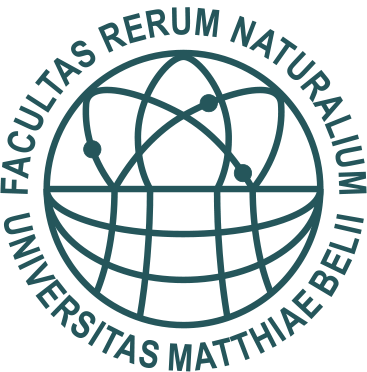REŠTITÚCIA KAMZÍKA VRCHOVSKÉHO TATRANSKÉHO (RUPICAPRA RUPICAPRA TATRICA) DO NÍZKYCH TATIER
Reintroduction of Tatra Chamois (Rupicapra rupicapra tatrica) in the Low Tatras Mts. (Central Slovakia)
Peter URBAN* & Radovan MALINA
Katedra biológie a ekológie, Fakulta prírodných vied UMB, Tajovského 40, 974 01 Banská Bystrica, email: Peter.Urban@umb.sk, urbanlutra@gmail.com
* korešpondujúci autor
Abstract
Chamois (genus Rupicapra) are mountain ungulates distributed over the central and southern Europe mountainous areas, including the Balkan peninsulaand the Near East (Turkey and Caucasus). Living in prolonged isolation they have been descript (based on morphological physiological, behavioral and genetic differences) as two biological species with several subspecies: the Alpine chamois (Rupicapra rupicapra, Linnaeus 1768) with seven subspecies based on local geographical distribution (rupicapra, cartusiana, tatrica, carpatica, balcanica, asiatica,caucasica) and the Pyrenean chamois (R. pyrenaica, Bonaparte, 1845) with three discontinuous subspecies (pyrenaica, parva, ornata). The Tatra chamois (Rupicapra rupicapra tatrica, Blahout 1972) is a glacial relict and a rare endemic subspecies, belongs to the group of young animal species since the first paleontological findings date back no earlier than the Middle Pleistocene with the majority of findings placed into the Late Pleistocene. In 1972 have been recognized by Milič Blahout, as a separate subspecies mainly based on morphological features. An autochthonous population of Tatra chamois occurs in the alpine zone of the Tatra Mts. (including the Western, High and Belianske Mts.), in their Slovak and Polish parts. As the Tatra chamois subspecies may be considered an evolutionarily significant unit it requires conservation management.
The Tatra chamois are classified by the IUCN World Conservation Union as an endengered species (EN) in the Carpathian Mountains and in the Draft Carpathian red list of threatened mammals they are considered to be endangered too. Tatra chamois has been classified as a threatened species also by the EMA (European Mammal Assessment). There is only one native autochthonous population in the High, Western and Eastern Tatra Mountains (in the Slovak and Polish side). A second small group has been reintroduced in the Low Tatra.
The first written information about Tatra chamois dates from the 16th centuries. During the last 200 years man has significantly altered the environment of the Tatra chamois. Decreasing chamois population in the Tatra Mts. after the World War II prompted a heated debate between conservationists and hunters about the possible introduction of the Tatra chamois into other mountain ranges of Slovakia (the Nízke Tatry Mts., the Veľká Fatra Mts., and the Malá Fatra Mts.). After preliminary habitat analyses, the central part of Nízke Tatry Mts. were selected. Reintroduction of the Tatra chamois in the Nízke Tatry Mts. took place in the years 1969–1976. In total 30 chamois individuals (11 males, 16 females a 3 cubs)were released into the wild during the introduction, of which 20 individuals (66.7 %) in the first three years of the reintroduction (1968–1970) and the remaining 10 (33.3%) between 1972 and 1976.
At present there are about 100 individuals of Tatra chamois in the in central part of the Low Tatra Mts. (from west to east: from Chabenec peak to Štiavnica peak, and from north to south: from Bôry peak to Skalka peak), on areas of about 400–450 ha.
The main negative impact in the Low Tatra Mts. are as follows: indirect mountainous tourism, movement in mountains outside marked trails, illegal camping in the alpine environment, picking forest fruit (blueberry, cranberry) and sometimes collecting the thallus of lichen or moss, winter climbing, skiing on ski slopes, ski mountaineering, flying with motor aeroplanes and motorless aeroplanes and paragliding, motorcycling, snow cycling and sometimes driving outside roads in mountainss. In the 1960s, alpine chamois from introduced Czech populations were relocated to the Great Fatra (Veľká Fatra) Mountains, about 55 km south-west from the Tatras, and to the Slovak Paradise (Slovenský raj) Mountains, about 35 km south-east from the Tatras. Genetic analysis confirmed a low genetic variation and a high level of inbreeding in all four chamois populations in Slovakia, the least variable being the native Tatra chamois population. Introduced Alpine chamois showed greater variation, despite originating from few founders. Male-biased introgressive hybridization between the back-up Low Tatra population and both introduced Alpine populations was detected using several approaches, with up to 19 % of the genome introgressed from Alpine chamois.
Key words: chamois, Slovakia, conservation, management
